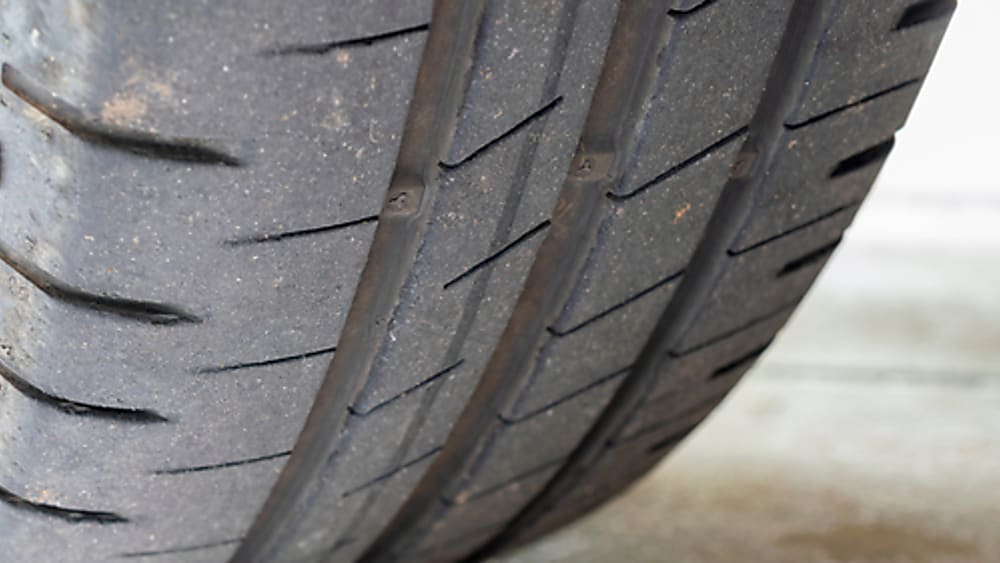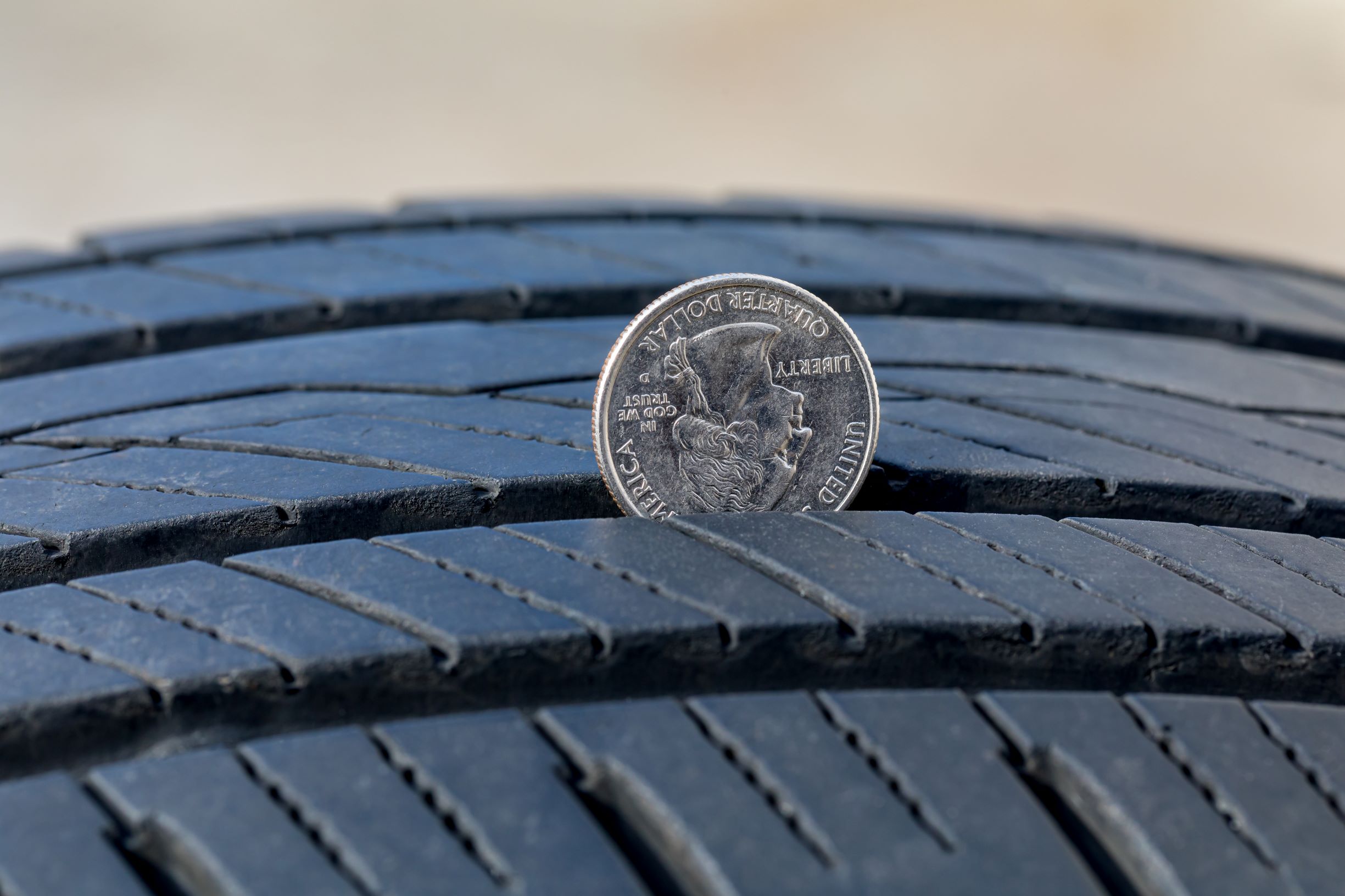Tire News & Information
Best price guarantee
Tire replacement coverage
24/7 roadside assistance
Easy returns

Your vehicle's ability to stop quickly and safely is crucial for avoiding accidents on the road. Tire tread depth plays a significant role in determining your car's stopping distance, which is the total distance traveled from the moment you realize you need to stop until your vehicle comes to a complete halt.
Maintaining proper tire tread depth is essential for ensuring optimal braking performance and keeping you and your passengers safe. As tire treads wear down over time, it's important to understand how this affects your vehicle's stopping capabilities and when it's time to replace your tires.
In this article, we'll explore the relationship between tire tread depth and stopping distance, as well as other factors that can impact your car's ability to stop efficiently. By the end, you'll have a better understanding of how to maintain your tires for optimal safety and performance.
What is Stopping Distance?

Stopping distance is the total distance your vehicle travels from the moment you recognize the need to stop until your car comes to a complete stop. It consists of two key components: reaction distance and braking distance.
Reaction distance refers to the distance your vehicle covers from the instant you perceive a reason to stop until you actually apply the brakes. Most drivers have a reaction time that falls between 0.5 to 2 seconds, which can be affected by factors such as fatigue, distractions, and anticipation of the need to stop.
Braking distance, on the other hand, is the distance your vehicle travels from the time you hit the brakes until you come to a full stop. This distance can vary depending on factors like vehicle speed, load, tire condition, road conditions, and the effectiveness of your braking system.
To calculate your total stopping distance, you need to consider both reaction distance and braking distance. A simple formula to estimate stopping distance is to take the first digit of your vehicle's speed, square it, add a zero to the end, and divide by two. Then, double your speed and add that number to the previous result. For example, if you're traveling at 50 mph:
- Square the first digit (5): 5^2 = 25
- Add a zero to the end: 250
- Divide by two: 250 ÷ 2 = 125
- Double your speed: 50 × 2 = 100
- Add the results: 125 + 100 = 225 feet
This means that at 50 mph, your estimated total stopping distance would be approximately 225 feet.
How Does Tire Tread Depth Affect Stopping Distance?

Tire tread depth plays a key role in how effectively your vehicle can come to a halt. A deeper tread ensures that more of the tire's surface maintains contact with the road. This increased contact not only enhances traction but also allows for shorter stopping distances, which is particularly crucial under wet or slippery conditions.
As tread depth decreases, the tire's capacity to manage water and debris is compromised. This reduction in efficiency can lead to a loss of grip, extending the distance needed to stop. Tires with worn treads are less effective at maintaining traction on wet roads, which can result in hydroplaning and an increased stopping distance.
Studies illustrate the impact of tread depth on stopping power. For example, when traveling at 70 mph, tires with a tread depth of 4/32" can halt significantly quicker than those with only 2/32". This difference—stopping up to 88.8 feet shorter—underscores the importance of maintaining adequate tread depth for safety and performance. Properly maintained tires not only boost your vehicle’s handling but also play a vital role in ensuring road safety.
What Other Factors Impact Stopping Distance?
In addition to tire tread depth, various other elements significantly influence a vehicle's stopping distance. The speed at which a vehicle is traveling greatly affects its ability to stop quickly. As speed increases, the distance required to come to a complete stop also rises due to greater kinetic energy. Drivers must remain vigilant about speed limits, especially in conditions where quick stops might be necessary.
The weight of a vehicle is another critical factor. Heavier vehicles, such as trucks and SUVs, require more force to decelerate and halt. This increased need for force is due to the additional energy that heavier masses carry. Consequently, drivers of such vehicles must be particularly mindful of their stopping distances, especially when carrying heavier loads or towing.
Road conditions can dramatically alter stopping distances. Surfaces that are wet, icy, or covered in debris can limit tire grip, leading to longer distances needed for a safe stop. In adverse weather, even the best tires can struggle to maintain traction. As a result, drivers should adjust their speed and driving style to match the conditions, ensuring they can stop safely when necessary.
The condition of the vehicle's braking system is also essential for effective stopping. Regular maintenance ensures that components such as brake pads and rotors are in optimal working order. A well-maintained braking system provides the necessary stopping power, while neglecting this upkeep can lead to increased stopping distances and reduced safety.
Lastly, driver attentiveness plays a crucial role. Factors like fatigue, distractions, or impairment can delay a driver's response time, extending the interval before braking is initiated. Staying focused and alert behind the wheel is vital for minimizing reaction time and executing timely stops in response to road conditions.
What is the Minimum Recommended Tire Tread Depth?

According to safety guidelines, tires should be replaced when their tread depth falls to 2/32". At this stage, the tread is worn enough to compromise traction, particularly on wet roads, posing a risk to safe driving. This recommendation serves as a threshold to ensure tires maintain the minimum necessary grip under various conditions.
However, many tire specialists suggest considering a tire change at 4/32" for enhanced safety and performance. This proactive approach accounts for the loss of traction that occurs before reaching the legal minimum, providing better control and shorter stopping distances in challenging weather.

To assess tread depth, a tire tread depth gauge offers precise readings, ensuring you can monitor wear accurately. Alternatively, using the "penny test" provides a quick check: place a penny into the tread with Lincoln's head downwards. The visibility of the top of Lincoln's head indicates it's prudent to start planning for new tires. Regular checks help maintain safety and ensure timely tire replacements.
How Can You Maintain Optimal Tire Tread Depth and Stopping Distance?
Keeping track of your tires’ condition regularly ensures they function effectively when needed most. Use a tire tread depth gauge to get an accurate reading of your tire's tread depth. Staying informed about your tire's wear level helps you plan for replacements before they become a safety concern.
Switching the positions of your tires periodically is crucial for promoting even wear. By rotating your tires at intervals recommended by your vehicle's manufacturer, you ensure balanced tread wear. This practice helps prolong tire life and maintains consistent performance, crucial for safe braking.
Maintaining the correct air pressure in your tires is key for optimal road contact and handling. Ensuring your tires are inflated to the specifications listed in your vehicle's manual keeps them performing at their best. This step helps in preserving the tire's structure and maximizing its grip on the road.
Ensuring your wheels are correctly aligned is essential for tire health. Misalignment can cause irregular wear and affect handling. If you notice your vehicle drifting or if the steering feels off, it may be time to get an alignment check. Proper alignment prevents uneven wear, contributing to stable driving and effective stopping.
Adopting gentle driving techniques supports tire longevity. Avoiding sudden stops and rapid accelerations minimizes stress on your tires. Smooth driving habits reduce unnecessary wear and ensure that your tires maintain their integrity, providing reliable stopping power when needed.
Maintaining proper tire tread depth is essential for ensuring your vehicle can stop safely and efficiently. By understanding the factors that influence stopping distance and taking steps to keep your tires in optimal condition, you can enhance your safety on the road. When it's time to replace your tires, shop for tires online with us to find the best deals and keep your vehicle performing at its best.
Ready to find the perfect tires?
Search By